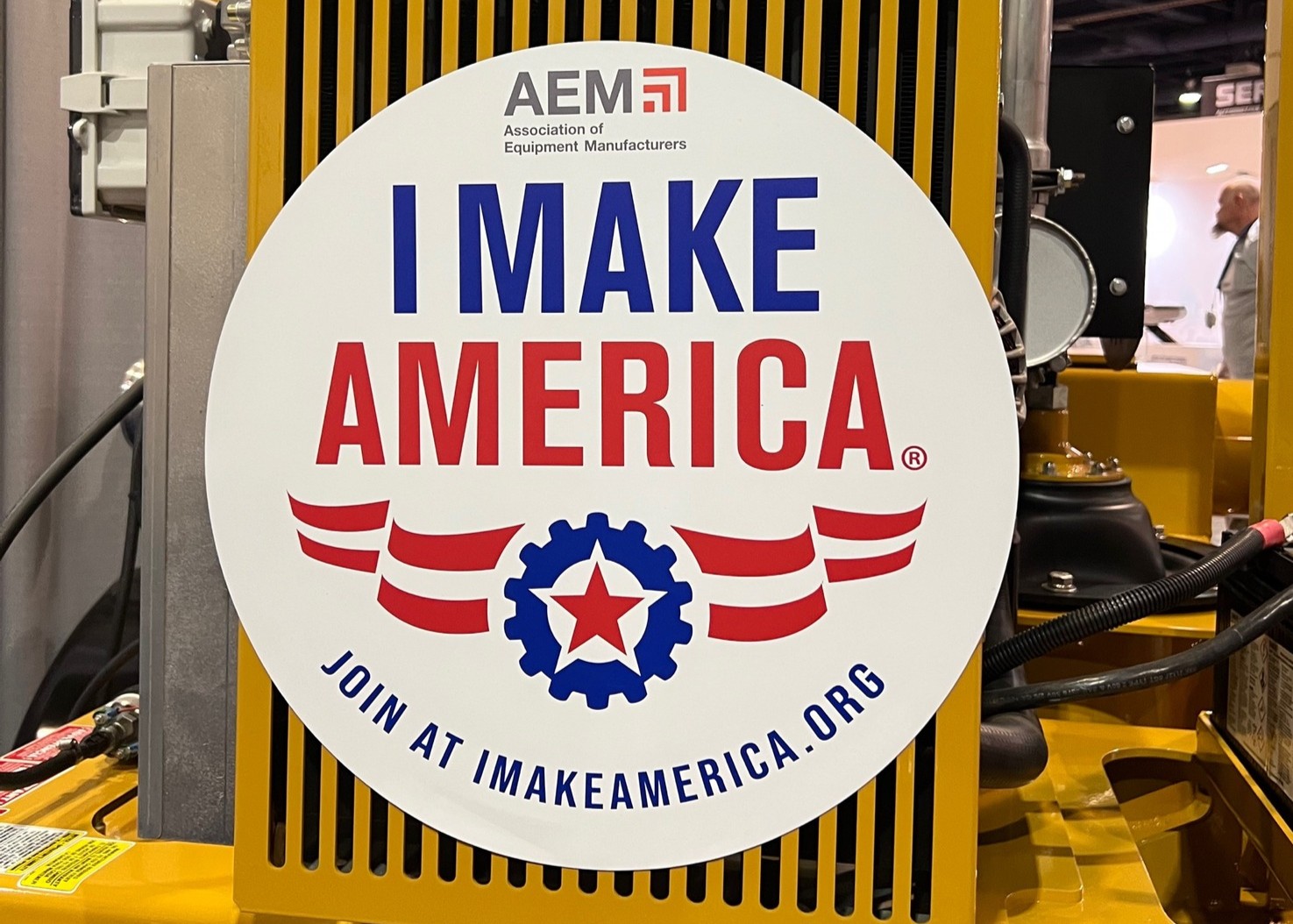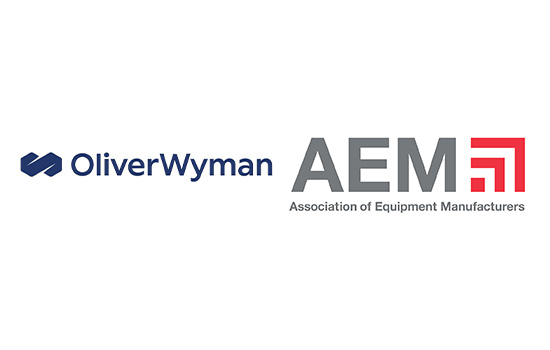By Gregg Wartgow, Special to AEM —
The beef and dairy industries have outlined comprehensive plans to achieve net zero over the next few decades. Accomplishing that objective will require deliberate actions from a variety of stakeholders, including beef and dairy farmers themselves, logistics providers, processors, and resellers.
Ag equipment manufacturers also have an important role to play in this effort. Modern, innovative equipment generates less emissions itself, while also helping to improve efficiency and energy use across numerous facets of a cattle farming operation. Furthermore, the variety of equipment used every day on beef and dairy farms can help capture the data necessary to measure and monitor activities and progress.
“There is definitely a need for more granularity when it comes to data,” said Samantha Werth, executive Director of the U.S. Roundtable for Sustainable Beef and Senior Director for Sustainability at the National Cattlemen’s Beef Association. “It’s also important to give producers the opportunity to possess quality data they could potentially get paid for having. When technology can make that easier, it is hugely helpful.”
“When different models are applied, we’re often taking a top-down view of the industry,” added Fabian Bernal, vice president of environmental sustainability measurement and modeling at Dairy Management Inc. “In reality, the most important things are happening from the bottom-up. Once actual farm- and process-level data becomes available, that data can be used as a reporting methodology to support the efforts of the industry. That’s much different than having to rely on big data models, assessments and ‘best forecasts.’ This is when we can become really strong as an industry working toward our global goals.”
Sustainability is everyone’s business. Whether it is through minimizing operational impact on the environment, aligning with ever-evolving regulations, or supporting a more sustainable world, the equipment manufacturing industry’s future depends on the responsible use of natural resources. AEM has been committed to addressing societal and safety issues on behalf of the industry for 130 years. For more information, visit aem.org/sustainability.
Dairy Industry Seeks GHG Neutrality by 2050
This year has been an important one for the dairy industry. A strategic roadmap and baseline emissions have been set, with the industry’s first progress reported expected to be delivered in 2025. The roadmap establishes the following goals:
- GHG neutrality by 2050
- Optimized water use while maximizing recycling
- Improved water quality by optimizing utilization of manure and nutrients
The goals were developed by leaders from across the dairy industry’s value chain, including farmers, coop processors, retailers, and others. An extensive public comment period was also administered to ensure that all stakeholder voices could be heard.
The dairy industry’s Net Zero Initiative has already been receiving plenty of support. Roughly $31 million in external support poured in from corporate partners and granting agencies from 2020-2021.
“The Net Zero Initiative has led to two important areas of systems management,” Bernal explained. “First is a national GHG goal measurement calculator. This is where ‘big data’ plays into the analytics of the industry. Second is the Farm ES + RuFaS, which is that bottom-up farm data that feeds into the national data. Hopefully those two models come together.” According to Bernal, roughly 80% of total U.S. milk is reporting into this system.
Bernal pointed out that the dairy industry’s roadmap is “strategic” in nature, but not “tactical” where specific actions are outlined. That said, the industry is focused on understanding the decarbonization potential of available farm practices and technologies, as well as any barriers to adoption and achieving scale.
As Bernal explained, there are multiple ways for the dairy industry to decarbonize because there are multiple sources of emissions from “cradle to farmgate,” including enteric fermentation, anaerobic digestion of manure, dairy farm energy use, feed production, and others.
“Equipment is critical at all stages of the farmprint,” Bernal said. “We’re looking at roughly 100 different technologies that are supported by science, along with roughly 120 farm practices and equipment types required to implement the technologies. The only way to achieve our goals is with the help of technology and innovation.”
“Once actual farm- and process-level data becomes available, that data can be used as a reporting methodology to support the efforts of the industry. That’s much different than having to rely on big data models, assessments and ‘best forecasts.’ This is when we can become really strong as an industry working toward our global goals.” -- Dairy Management Inc.'s Fabian Bernal
Beef Industry Eyes Climate Neutrality by 2040
U.S. cattle producers and the broader beef supply chain are also striving to reduce total emissions over the next several decades. “Our goal of becoming ‘climate neutral’ involves reducing total emissions, with an eye on which emissions we need to target to achieve an actual impact on warming,” Werth explained.
Four beef supply chain sectors have identified specific goals and actions to help the beef industry reach its goal of climate neutrality by 2040.
Cow/calf sector. Only 11% of producers have written grazing management plans today. The sector would like to see that expand to the point that 385 million acres are covered by GMPs by 2050. That requires an increase of roughly 13 million acres per year. “We’ve focused on creating tools and resources to help encourage better uptake of grazing management plans among producers,” Werth said.
Feedyard sector. This sector has a challenge in front of it. While feedyards would like to reduce GHG emissions by 10% per pound of beef by 2030, there is evidence that emissions may actually be increasing in this sector. “Animals are larger and are staying on feed longer,” Werth pointed out. “While cattle are more efficient and gain more effectively, having them around seven days longer is having an impact on emissions.”
Werth said the feedyard sector is also impacted by external market forces. For instance, consumer demand for natural products that do not use a hormone implant leads to reduced efficiency in the sector.
“We’re working with the feedyard sector to think through other innovative ways to address consumer needs while also meeting our GHG emission reduction goals,” Werth said. “Some of that can come from different additives, genetic technologies, and technology related to ration innovation.”
Packers and processors. This sector would like to see 90% of beef processed in the U.S. coming from companies with a GHG reduction strategy that are reporting against that strategy. Werth said next steps include determining how to support this sector in different adaptations to technology and infrastructure to help meet that goal.
Retail and food service. The initial goal was to reduce Scope 1 and 2 emissions by 2023. Werth said 85% have accomplished that. For the few who haven’t, questions regarding legal implications have stood in the way. “We’re focused on creating resources and helping this sector figure out what a credible goal looks like, and helping companies set a reliable plan to actually achieve the goal,” Werth said.
The other ongoing goal in this sector is to reduce Scope 3 emissions by 2030. “We also want to have a strategic plan in place by 2030 with specific steps to achieve climate neutrality for the beef value chain for scopes 1, 2, and 3 by 2040,” Werth added.
The year 2040, much less 2050, may sound like a long way off. But important steps will continue to be taken every day by a variety of stakeholders in the beef and dairy industries. Innovative ag equipment will play an important role in many of those steps, from the data being collected on the farm to the manner in which that farm operates more efficiently.





